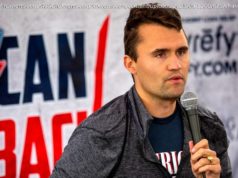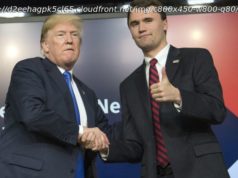At Las Vegas University Medical Center, Dr. Jay Coates shifted into triage mode, asking “who’s dying first?” and seeing who could be saved.
LAS VEGAS — The Las Vegas University Medical Center looked like a war zone when trauma surgeon Jay Coates arrived just after 11 p.m. PT to care for the scores of wounded victims of the largest mass shooting in U. S. history.
As he looked at the full beds and patients “packed and stacked in the hallways,” he shifted into triage mode, asking himself “Who’s dying first?” and who could he save.
“We started divvying them up, taking them to the operating room and doing what’s called ‘damage control surgery,’ where you’re not definitively repairing everything,” Coates, a medical profession of two decades, recalled. “You are just stopping the dying.”
That’s exactly what medical staff did. John Fildes, trauma center medical director, said UMC received more than 45 trauma patients Sunday night. Although some died before they reached the hospital, “the patients who arrived alive have all survived,” Fildes said.
Las Vegas shooting: Complete coverage from the USA TODAY NETWORK
At Sunrise Hospital and Medical Center 14 of the 180 people treated have died, according to Stacy Acquista, a spokeswoman for the level-two trauma center. Of those patients, 120 had gunshot wounds.
At least 50 surgeries were performed concertgoers by midafternoon Monday.
Authorities said they expected the number of fatalities to rise throughout the day. During a press conference at 6 p.m. ET, the death toll stood at 59 with 527 injured.
People walking in and out of the hospital were emotional, as they held on to one another to visit loved ones inside.
One man stood next to his truck, looking up at the hospital with swollen eyes. His brother, from Kingman, Ariz., had been shot in the head and wasn’t expected to survive, he said. He did not want to identify himself or his brother until they knew what would happen.
Acquista said many patients remained unidentified in the hospital due to the sheer volume of people they were treating. Hospital staff were working with authorities to help families get in touch with injured loved ones.
Outside the hospital, medical staff mingled with police, swapping stories from the horrors they had seen the night before.
Meanwhile, people who wanted to help by giving blood flooded donation centers. There were four places to donate in Las Vegas Monday, but their capacity was limited by the number of blood donation vehicles at each station. At UMC, they could handle 300 donors, and were already booked full by 11 a.m.
Laura Alvarado, a donor recruitment representative with United Blood Services, said the donation response was unlike anything she’d seen in 11 years on the job, but the challenge would be sustaining the donations in the days and weeks to follow.
“All these people, all they want to do is help,” Alvarado said, gesturing to a line of donors, some of whom had waited as much as four hours. “But we need to keep the momentum going.”
Contributing: Yihyun Jeong, The Arizona Republic. Follow Brett Kelman on Twitter: @TDSbrettkelman






